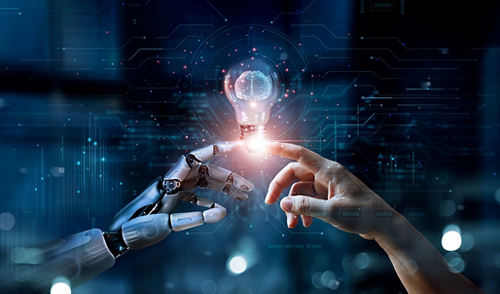
When people claim AI will replace jobs, they likely weren't referring to the CEO's position. However, the threat landscape is shifting in unprecedented ways. Earlier this year, LastPass experienced a near-miss incident where a deepfaked version of their CEO, Karim Toubba, reached out to the firm’s employees via WhatsApp. Thankfully, vigilant staff recognized the deception, but it's only a matter of time until an AI-powered attack succeeds. The issue is not just AI's capability but its accessibility to both benevolent and malicious actors.
Cybersecurity is evolving rapidly, with traditional attack vectors such as phishing, social engineering, and network penetration becoming more sophisticated through AI. The barrier to entry for hackers is lower than ever, as Rinki Sethi, CISO at BILL, pointed out. Today, with a few AI-generated prompts, malicious actors can circumvent everything from parental controls to corporate-grade security.
Phishing attacks, for instance, have become more dynamic and tailored. Machine learning enables these attacks to adapt in real-time, making static defenses obsolete. Phishing attacks now use real-time feedback to adjust and deceive users more effectively. This adaptability means that the conventional method of raising awareness through occasional gotcha-emails from IT departments might breed overconfidence rather than vigilance.

Social engineering has also seen significant advancements. Deepfake technology allows cybercriminals to create highly convincing impersonations, as seen with LastPass. Detailed replicas of CEOs can be crafted from publicly available information, needing just one distracted or uninformed employee to succeed. The human element remains the weakest link in cybersecurity. Even the most secure systems can be breached by exploiting human error, whether it's an executive assistant letting in an unauthorized person or a CEO connecting to a spoofed WiFi network.
AI has revolutionized network penetration as well. AI algorithms can scan for vulnerabilities at unprecedented speeds and accuracy. Once identified, these vulnerabilities can be exploited with precision, executing attacks at a scale that was unimaginable before. Rinki Sethi highlighted the need for more sophisticated defenses to counter these AI-powered penetration attacks.
To navigate this perilous landscape, CEOs must prioritize making cybersecurity accessible to everyone in their organization. Bronwyn Boyle, contract CISO of TSB Bank, stressed the importance of involving the entire workforce in cybersecurity efforts. By framing cybersecurity in accessible terms, organizations can foster a culture of vigilance and collective responsibility.
Another crucial strategy is to adopt a zero-trust framework. Zero trust does not imply distrust but rather verification before trust. This approach can help mitigate the risks posed by AI-powered social engineering attacks. For instance, knowing the specific communication habits of a CEO can help employees identify and reject fraudulent attempts.

Recognizing the continuous nature of the cybersecurity arms race is vital. Continuous learning and adaptive frameworks are essential to keep pace with the evolving threat landscape. Empowering CISOs to challenge and enhance organizational security practices is crucial. Additionally, partnering with service providers like Directpath Global Technologies (DGT) can provide a significant boost to your defenses. As an MSSP, DGT offers comprehensive services including Mobile Threat Defense (MTD), Extended Detection and Response (XDR), Vulnerability Assessment and Penetration Testing (VAPT), SOC2 compliance, Vulnerability Risk Management as a Service (VRMaaS), Web Application Firewall (WAF), and virtual Chief Information Security Officer (vCISO) services. Their advanced AI division customizes these services to meet the unique needs of organizations, enhancing both cybersecurity and operational efficiency.
In conclusion, CEOs must be proactive in understanding and addressing AI-powered cybersecurity threats. By fostering a culture of vigilance, adopting zero-trust principles, and leveraging expert services, organizations can better defend themselves against the sophisticated cyber threats of 2024 and beyond. Source: Forbes
.png)
コメント